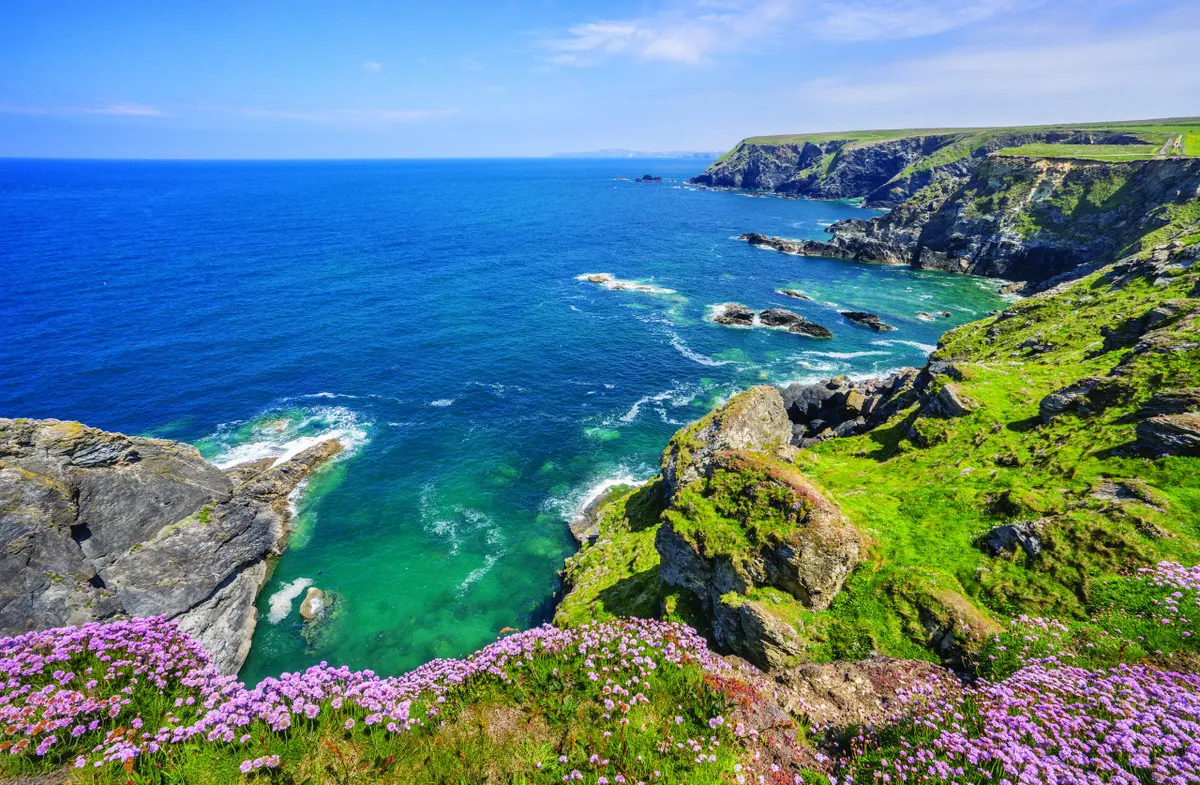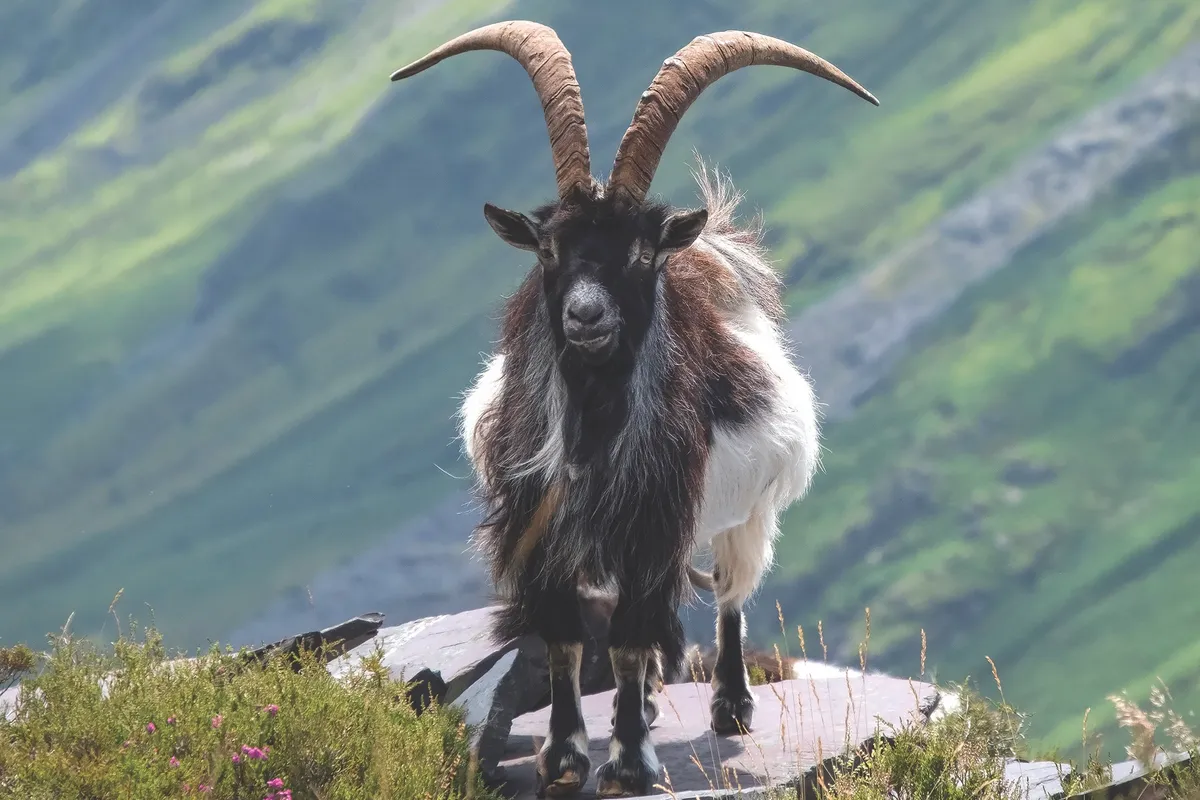June is a great month to be out in the countryside. Our wildflower meadows are full of colour, butterflies are at their most active and our coasts shimmer beneath the long, balmy days of summer.
From tropical gardens and flitting birds to meandering coast paths and seaside resorts, we’ve come across some amazing photography while putting together the June 2020 issue of BBC Countryfile Magazine. Celebrate the month with a few of our favourite images.
Enjoy early summer wildlife and nature with our gallery of beautiful photographs from around the UK countryside in June.
Best nature photography in June
Towpath trial

The Canal & River Trust is currently undertaking a six-month trial across 375 miles of towpaths – almost a fifth of the Trust’s network – to assess the benefits of changing its mowing regime. The trial, which started in April, seeks to balance the needs of boaters, anglers and others accessing the water, while benefiting wildlife and saving on mowing costs for the charity (the Trust currently spends around £2 million a year mowing more than 2,000 miles of towpath between April and October).
The reduction in mowing will encourage a greater diversity of plants and flowers to grow, offering more shelter and food sources for insects, birds, mammals and reptiles.
New Forest splendour

The New Forest is magical all year round, but in summer there are some unmissable wildlife treats. Being in the very south of England and close to the sea, the area awakens from its winter sleep early. The mosaic of heathland and mature trees, both conifer and broadleaved, offer a huge variety of habitats that are home to many different species.
Magnificent castle

Culzean Castle, Maybole, Ayrshire; this magnificent 260-hectare estate that surrounds this palatial clifftop castle encompasses sandy beaches, ancient caves, hidden follies, wild woods, a lake, play areas and café. Spot deer, llamas, wildfowl and butterflies.
Harvest mouse

Orange brown with a white underside and small ears, this tiny mouse of open fields builds a ball-like nest and eats seeds, fruit and insects. 5–8cm long, tail 5–8cm.
Newstead Abbey, Nottinghamshire

Once home to Lord Byron, the 12th-century abbey sits in glorious parkland and formal gardens whose lakes, ponds and cascades are fed by the beguiling River Leen. Explore the many themed gardens, from Japanese to sub-tropical, and hunt for clues on the fun indoor and outdoor family trails. newsteadabbey.org.uk
Summer falls

One of June’s many joys is the sight of fresh green vegetation flourishing beside waterfalls brimming with spring rainfall and meltwater, before high summer dries the waterways and browns the leaves. The magical and secluded Middle Black Clough Waterfall lies near Woodhead Reservoir in Derbyshire – walk in wellies or waterproof boots through lush woodland before a short scramble to this special spot.
Long-tailed tit

Foraging flocks resemble Christmas decorations. Long tails and high-pitched peeping and spluttering “tsirrup” calls. Found in deciduous woods and, increasingly, gardens.
Tresco Abbey Gardens

Bizarrely, the quintessential Cornish coastal garden for most people isn’t on mainland Cornwall. It lies offshore by about 30 miles on the Isles of Scilly. It sums up just why Cornish gardens are so important, so different and so wonderful to experience. With one part on a white sandy beach and the other on a tall rocky granite outcrop, a fertile but thin sandy loam and even milder temperatures than on the mainland, it has become an important destination for gardeners from all over the world. Plants from South Africa, Australia, North and South America as well as the Mediterranean all thrive here
Beside the sea

Llandudno’s air of Victorian gentility is enhanced by its pier – the longest in Wales – with lovely original kiosks along its uncluttered deck and an Edwardian pavilion turned amusement arcade. On Worthing Pier, the buildings are streamlined art deco and there is a resident pianist in the light-filled Southern Pavilion café for added 1930s ambience.
Kestrel

Despite a significant decline in the 1970s and 1980s, there are still 31,000 pairs of kestrels in the UK, making it one of our most common birds of prey. They typically live for four years and are widespread across the UK, with the exception of Northern Ireland and north-west Scotland. A decline in house sparrows has made sightings of urban kestrels much rarer.
Dinas Head

You know you’re going somewhere special when the road is so narrow the yellow lines on either side practically touch each other. It all adds to the magic of the descent into the cosy, cocooning north-east-facing cove of Cwm-yr-Eglwys (Valley of the Church). Here, quaint cottages huddle together in a narrow valley, sandwiched between Pembrokeshire’s dramatic, rugged coastal cliffs. This valley is all that links Dinas Head – often labelled on maps as Dinas Island – to West Wales, giving it an island-like feel without the need to cross water.
Godrevy Point

Virginia Woolf spent her childhood summers at Talland House above Porthminster Beach. She later said that lying in bed there and listening to the waves was her most important memory. The house has views across St Ives Bay to Godrevy Point and its enigmatic island, the inspiration for her book To the Lighthouse.
Canterbury, Kent

Famous for its medieval cathedral and throng of pilgrims and tourists, Canterbury has a beautiful hidden face – seen only from the Stour. You can walk stretches of this famous chalk river but it is best appreciated by boat as you slip through Venice-like scenes of half-timbered Weavers Houses with mullioned windows overlooking the clear water. You’ll also glimpse the gorgeous gardens of some very fortunate riverside homeowners.
London Colney, Hertfordshire

Poppies, cornflowers and other wildflowers are in bloom in a field near the village of London Colney, in Hertfordshire. Given the chance, many of our lowland fields could look like this but heavy use of fertilisers to promote grass for silage has meant that wildflowers lose out – and so do the insects that rely on them.
Great Diving Beetle

Great diving beetle – up to 35mm long, this handsome insect inhabits weedy ponds and lakes. A powerful swimmer that hunts tadpoles and small fish. Female has furrowed elytra; male’s are smooth. The 50mm-long larva has startlingly huge mandibles.
Three-spined stickleback

Stickleback –distinctive three dorsal spines and bony armour plating instead of scales. Male develops a red throat and belly over spring and summer and builds a nest for the female to lay eggs in; the male then guards the progeny. Up to 11cm in size.
Bradford River, Derbyshire

Strolling by the river in Bradford Dale, part of the Middleton and Smerrill Parish Sites of Meaning walk; the three standing stones sculpture in Long Dale marks the parish boundary.
Bakewell, Derbyshire

"It’s Monday morning and market day in Bakewell. I’m having a day off from walking to explore the town. At the cattle market, the auctioneer reels off bids at a breakneck speed. It’s an exhilarating experience even without a sheep or cow to sell. The nearby stalls offer everything from scented soap to work tools. I gather ingredients for a picnic lunch and head for All Saints’ Church – one of the Peak Pilgrimage churches – which sits on the hillside above the honey-hued town." – Helen Moat on a journey through the Peak District.
Haddon Hall, Derbyshire

Around Bakewell there are plenty of rainy day options. Drink in the art and glorious gardens of opulent Chatsworth House (chatsworth.org), visit the impressive medieval manor house Haddon Hall (above, haddonhall.co.uk), or discover the working flourmill and café at Caudwell’s Mill in Rowsley (caudwellsmill.co.uk) and its craft shop piled high with tempting wares.
Red kite

Kites look light and buoyant in flight. Their long wings and deep forked tail make them readily separable from buzzards, the most likely bird of prey to be confused with them. Kites soar – they always seem to be looking down at what is beneath them – but they are also extraordinarily manoeuvrable. Watch them rudder their tail and tilt their wings. The metallic hue to their plumage means they catch the sunlight. They are truly dazzling birds. Both sexes look the same but males are slightly smaller than females; neither weighs much above a kilo.
Wild Welsh Feral Goat

Until the late 18th century, the only domesticated goat established in this country was the British primitive goat. They were brought to Britain around 5,000 years ago, towards the end of the Stone Age, originally derived from the bezoar (Capra aegagrus), native to the Middle East. Together with sheep and cattle, these were some of the first animals to be domesticated and used in farming.
Great Dixter, East Sussex

The Long Border at Great Dixter in East Sussex, with planting designed by gardener and writer Christopher Lloyd, is a riot of joyous summer blooms. In 1910–12, Edwin Lutyens redesigned the existing 15th-century house and incorporated a 16th-century barn brought from another site, creating a much larger home.
Common blue

True to its name, the common blue buttterfly is Britain’s most widespread blue, found in a variety of grassy habitats. The male, shown here, is brightly coloured, while the female is mostly brown.
Bishop Middleham Quarry, County Durham

Bishop Middleham Quarry is best entered from a lay-by on a narrow road running north out of the village, some eight miles south-east of Durham city. It can also be accessed along a public footpath through Farnless Farm to its south, the fields of which, grazed by American bison and red deer, resemble a miniature prairie.
